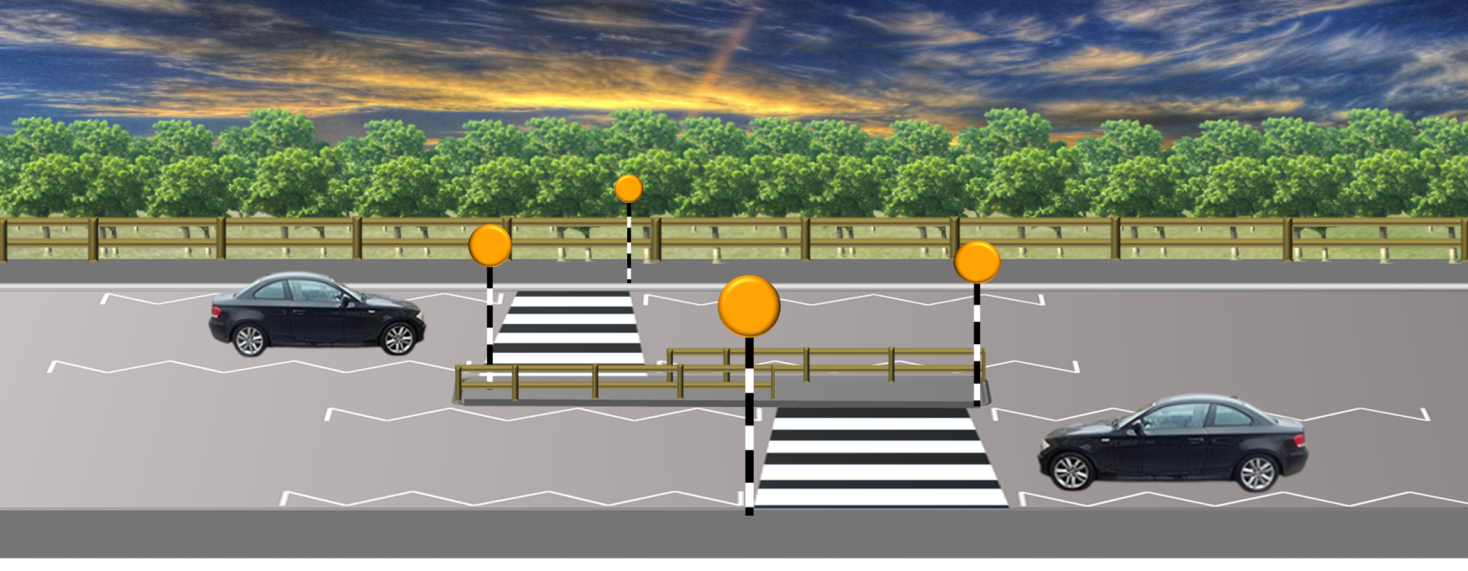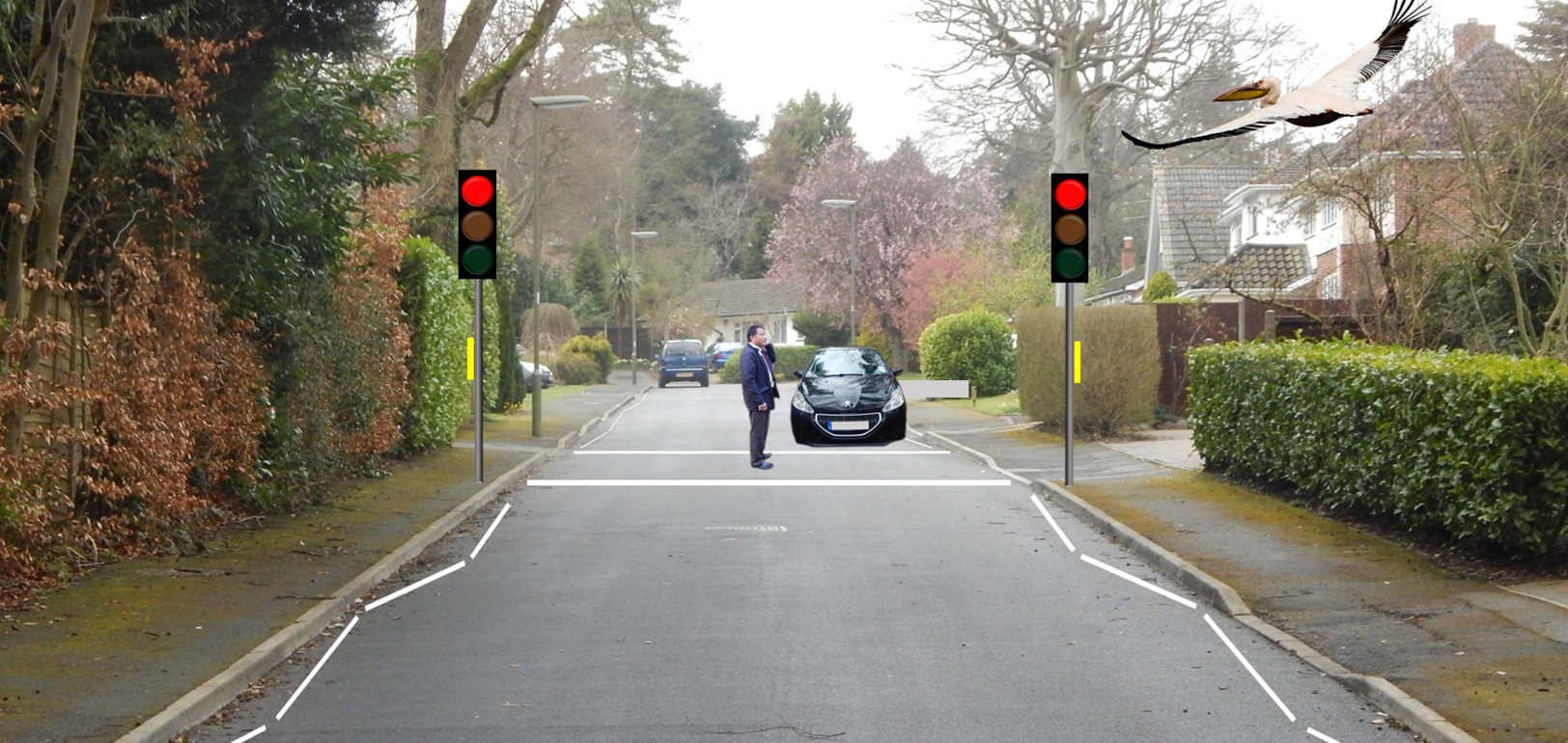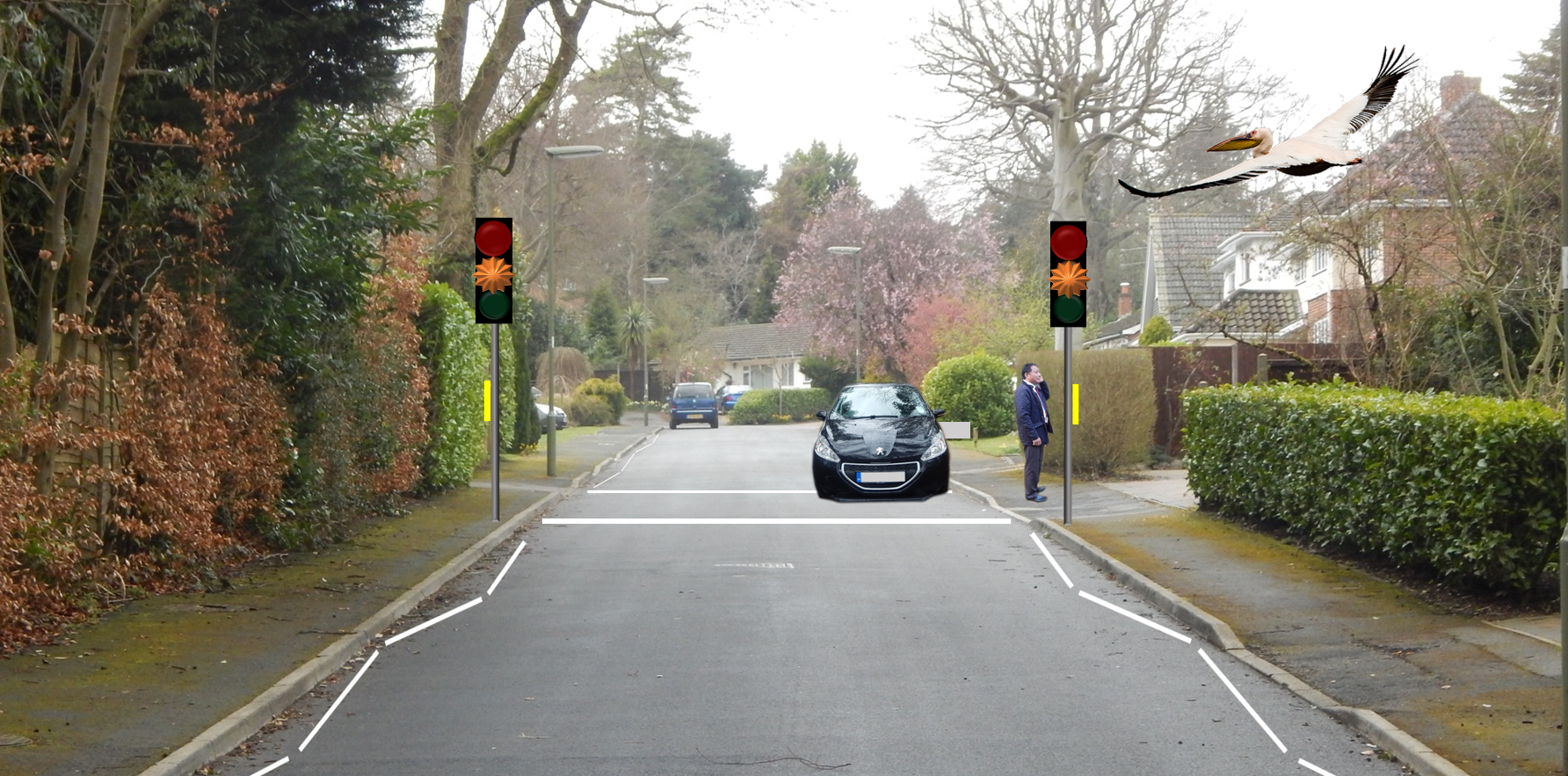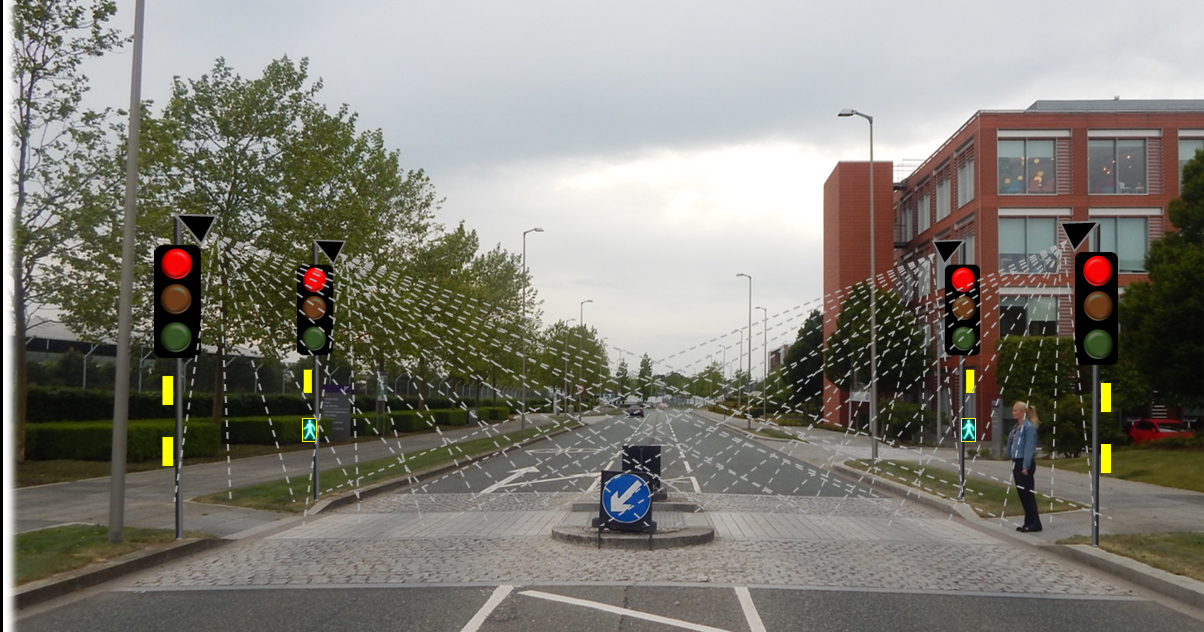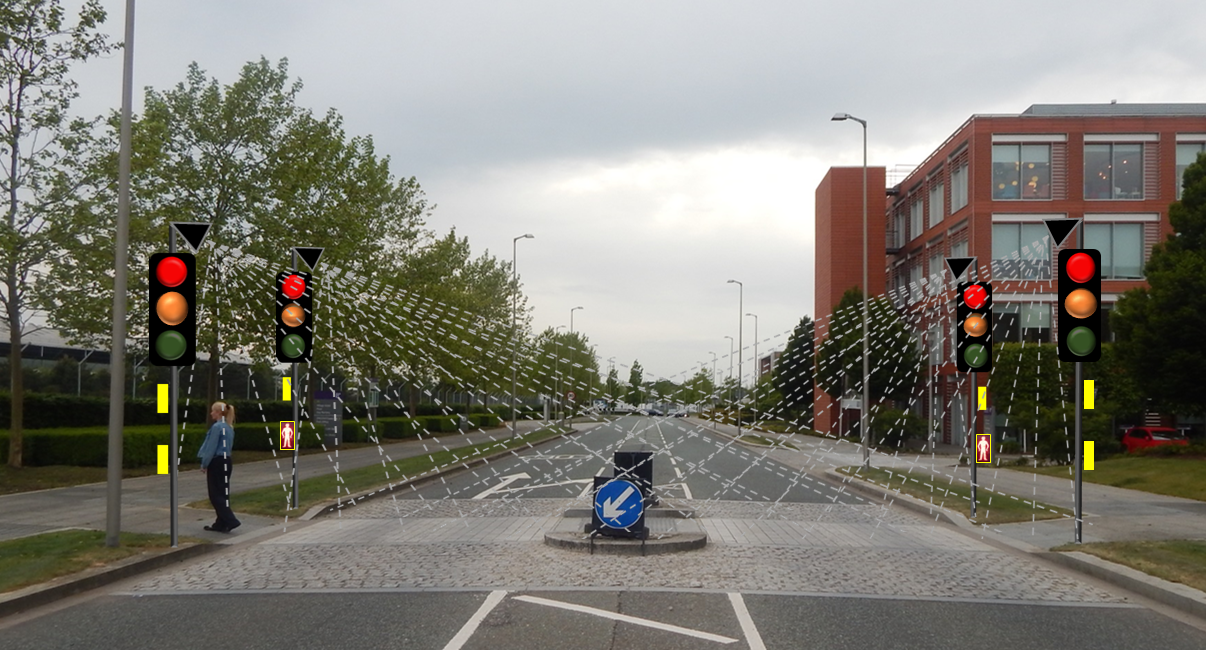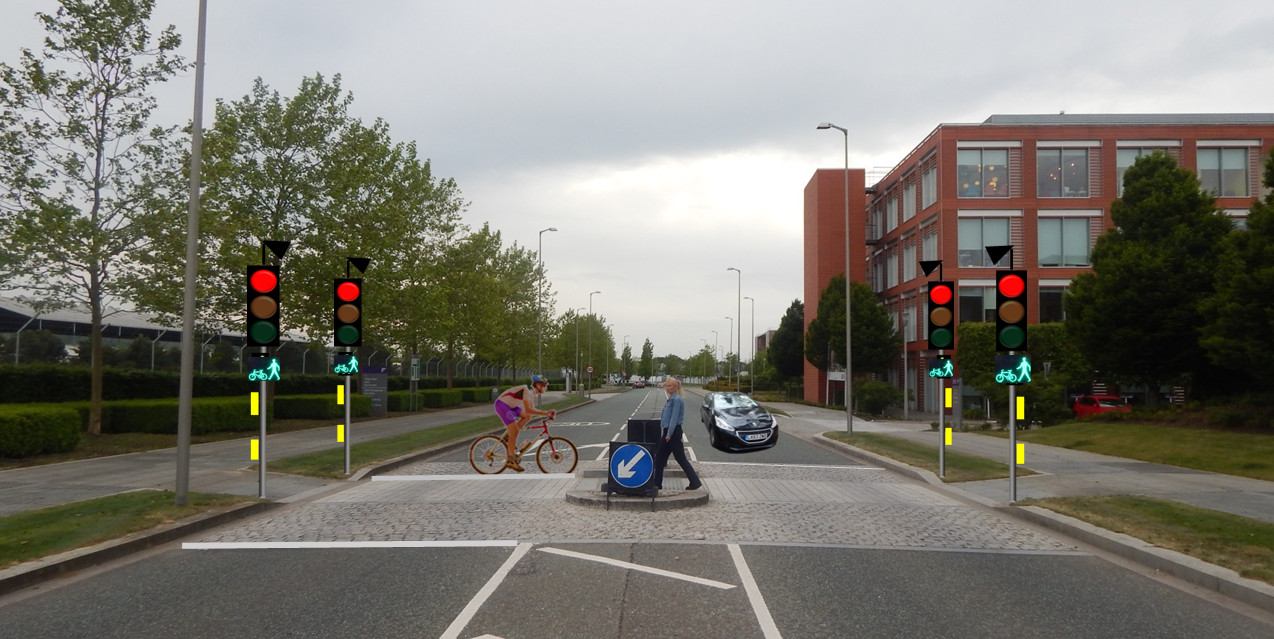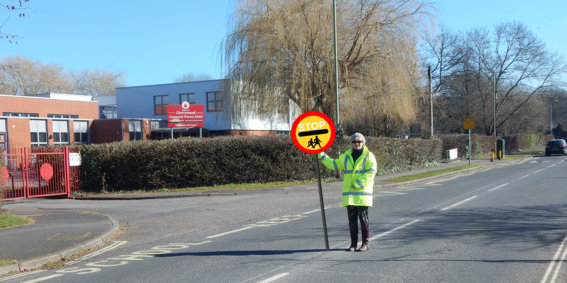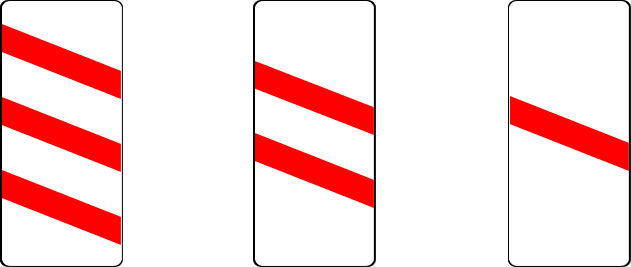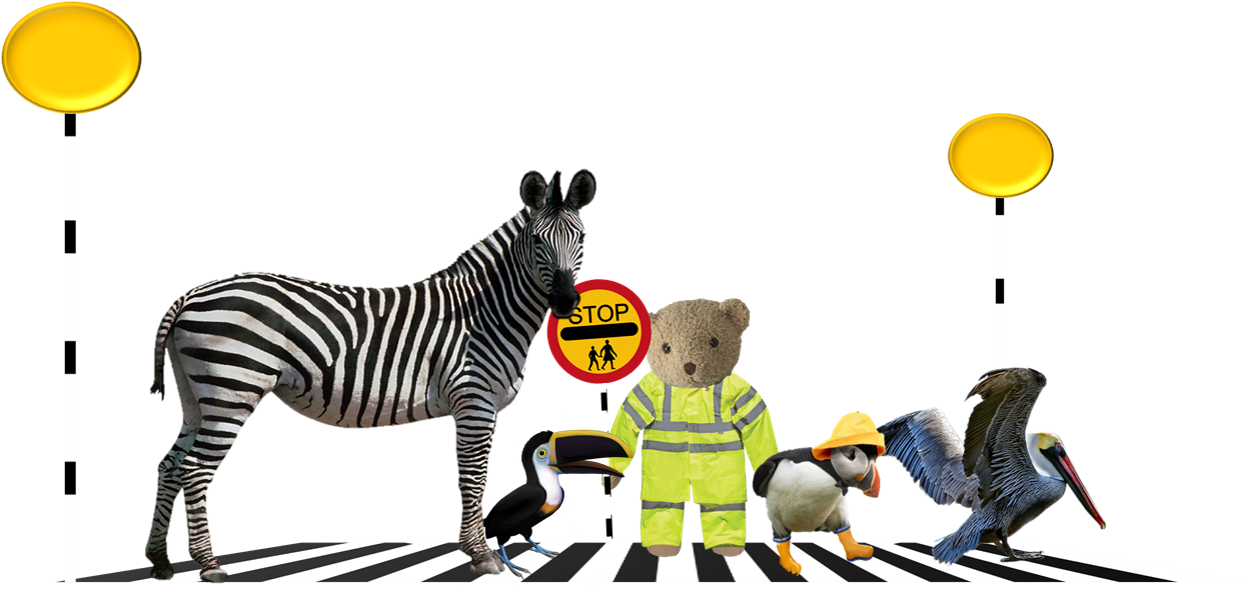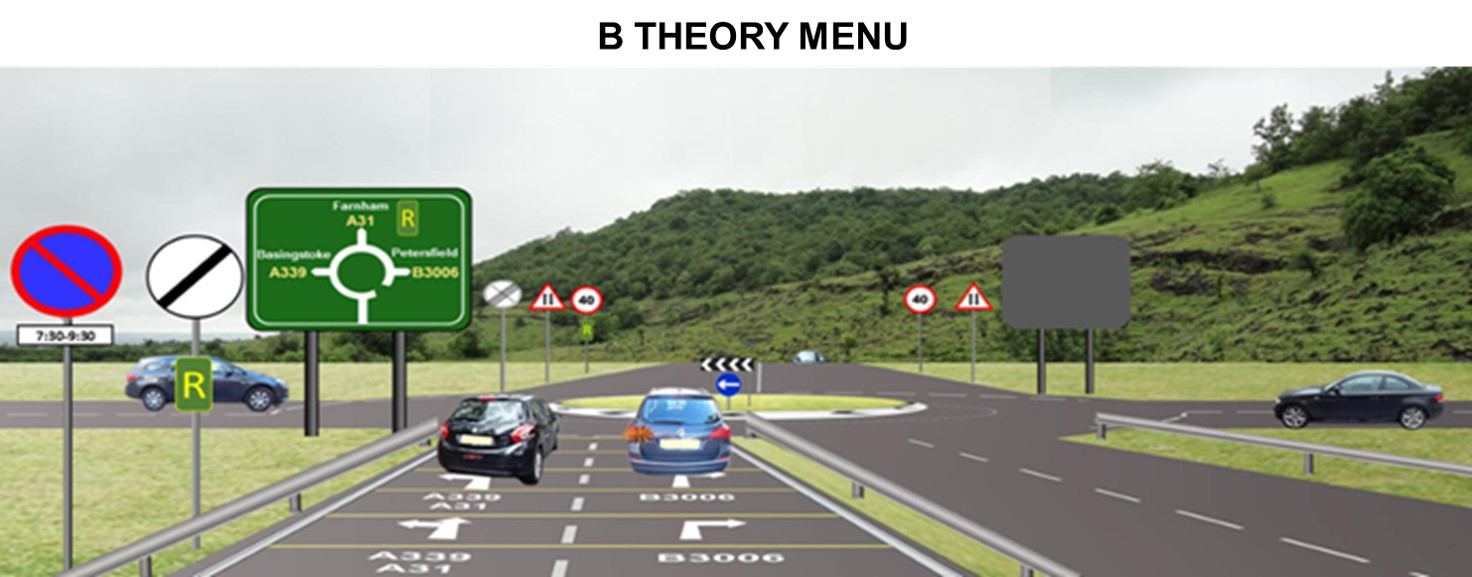PEDESTRIAN CROSSING
This section covers crossings and the procedures that must be carried out by you as the driver.
ZEBRA CROSSING
The zebra crossing gets its name from its black and white stripes. It is not controlled by traffic lights and can be a dangerous crossing to use if its regulations are not understood by the driver and pedestrian. On approach it is easily identified by the flashing amber beacons. As a driver, you must always be prepared to slow down and stop to give way to pedestrians.
When people are on the crossing you must wait until they have completely cleared even if your side of the crossing is clear. Never wave pedestrians to cross as this can be dangerous, you cannot be certain that traffic coming in the opposite direction have seen them. If elderly or disabled people are using the crossing be patient as they might not cross as quickly as younger or fitter people. The crossing in the picture above has a centre island, as the driver must treat this as a single crossing and wait until both sides are clear before driving on. Children are the most vulnerable as they can step onto the crossing without warning.
The crossing in the graphic above is staggered crossing with a centre island. This is to be treated as two separate crossings. In all cases the zig zag lines are there for protection. You must never park on the lines, you will restrict the view for both drivers and pedestrians.
PELICAN CROSSING
When approaching a pelican crossing you will notice that it is controlled by traffic lights. The sequence of the lights is slightly different to normal traffic lights. The pedestrian has to operate the crossing by pressing the button located on the posts.
The light sequence from green to red is normal. This will be green followed by amber on its own, then red on its own. At this point the green silhouette of a person walking will be displayed to the pedestrian, there will also be an audible intermittent bleep. The pedestrian should then proceed to cross the road as shown in the picture above.
After a short delay the green symbol that is displayed to the pedestrian will start to flash. Simultaneously the amber light seen by the drivers will begin to flash as shown in the picture right.
When this happens and the pedestrian has cleared the crossing, You can move off, even with the amber light flashing.
You must however be vigilant, although pedestrians are not permitted to start crossing when the green symbol is flashing there are always those that will ignore the rules and cross despite not being allowed to. Always be prepared for the unexpected.
PUFFIN CROSSING
The puffin crossing is a much safer crossing for both you the pedestrian,
The crossing is controlled by lights and sensors. The pedestrian operates it in the same way as the pelican crossing by pressing the button.
The lights will then change going through the normal sequence of lights. The pedestrian will then be able to cross. If the pedestrian walks away and does not cross the sensors will detect this and the lights will not change.
The sensors will detect the pedestrian as they cross, when they have cleared the crossing the light will change back to green (red and amber then green on its own), Unlike the pelican crossing there is no flashing amber.
When you see the green light telling you to proceed, a red symbol will show to any pedestrians. Although safer still apply caution at all times.
TOUCAN CROSSING
In addition to the crossings we have looked at so far, you may find yourself driving towards a crossing where a cyclist and pedestrian are waiting to cross.
In addition to the pedestrian lane an extra lane has been provided for cyclists. These are called toucan crossings – easily remembered by two can cross. The same rules apply and always when moving off show caution.
SCHOOL CROSSINGS
Another type of crossing you will experience is a school crossing. Although many schools have crossings that are controlled by lights, some are controlled by officials called lollipop controllers. If they are stood in the road displaying their stop signs you will be committing an offence if you do not stop.
Your registration will be given to the police. Outside of schools the road markings will display the word school and zigzag lines. These are yellow and you must never stop or park on these, not even briefly to drop someone off. By keeping them clear, you as a driver can see clearly and the children can see you.
LEVEL CROSSINGS
You will get ample warning when approaching a level crossing, On approach if the level crossing is concealed there will be additional countdown markers, these are red and white.
The crossings are controlled by Wig Wag lights and barriers.
Some are half barriers and some are full.
When approaching the crossing, if a train is coming you will be warned by a steady amber light, and a warning alarm. This light will go out shortly afterwards and be replaced by alternate flashing red lights. The barriers will lower. Approach all crossings with caution and do not try to beat the lights. If the red lights continue to flash after a train has passed it means another train is coming. If you are driving a Large Goods Vehicle, you must be aware of the length and width of your vehicle. If your Vehicle exceeds the length and width shown you must notify the signal operator before and after crossing.
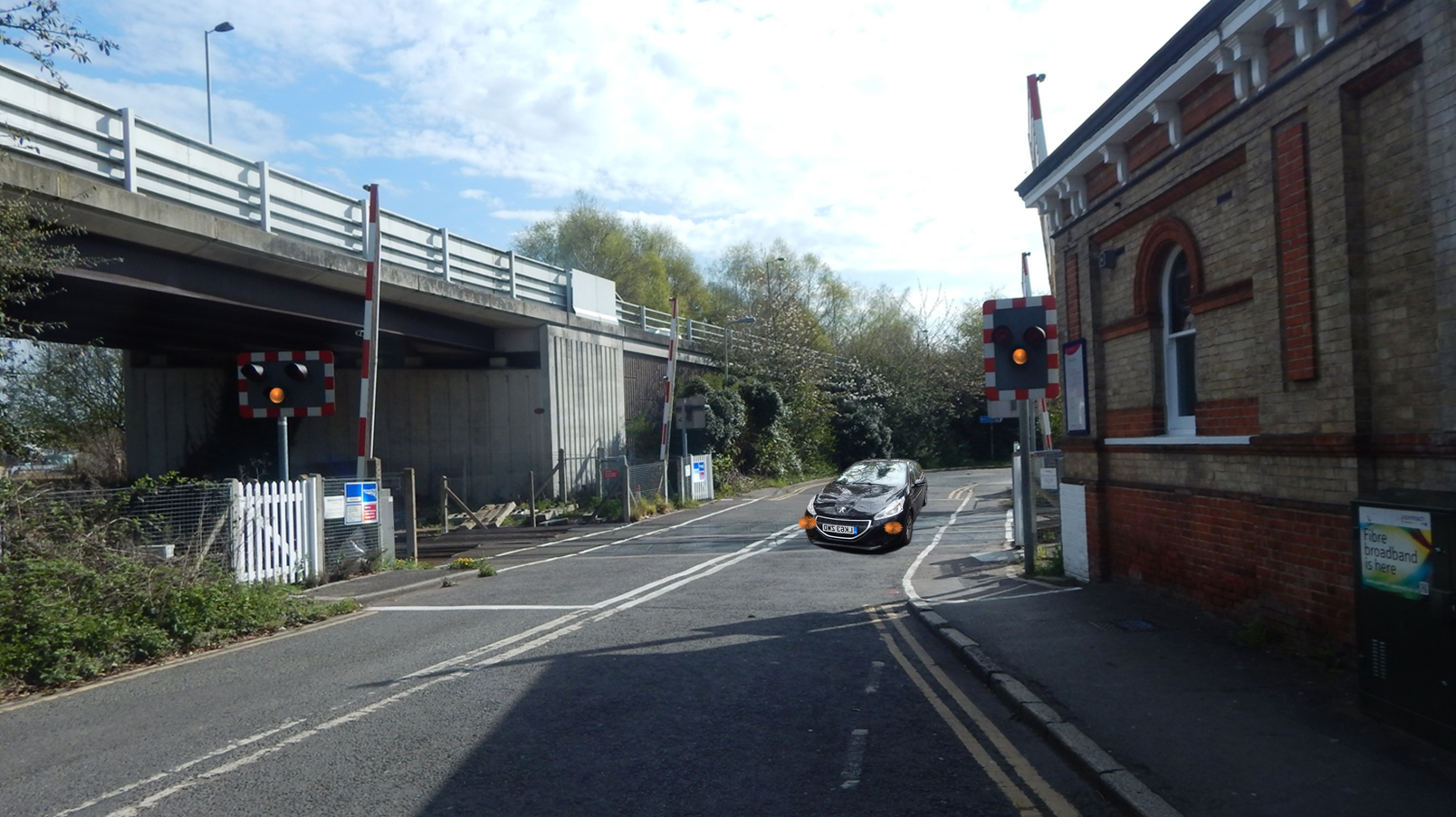 If you are unfortunate and find yourself broken down on a level crossing get everyone out of the vehicle as quickly as possible and phone the signal operator immediately. Phones are located next to the crossing and are clearly signed. The type of lights that control level crossings can also be found at lifting bridges and outside fire stations.
If you are unfortunate and find yourself broken down on a level crossing get everyone out of the vehicle as quickly as possible and phone the signal operator immediately. Phones are located next to the crossing and are clearly signed. The type of lights that control level crossings can also be found at lifting bridges and outside fire stations.
In more rural areas you may find yourself having to manually open the gates yourself, always check the lights to make sure it is safe to cross. The crossing will have a simple red and green light system, if you are unsure, ring the signal operator. Once you have crossed, you must stop and close the gates. Always close the gate furthest away from you first.




